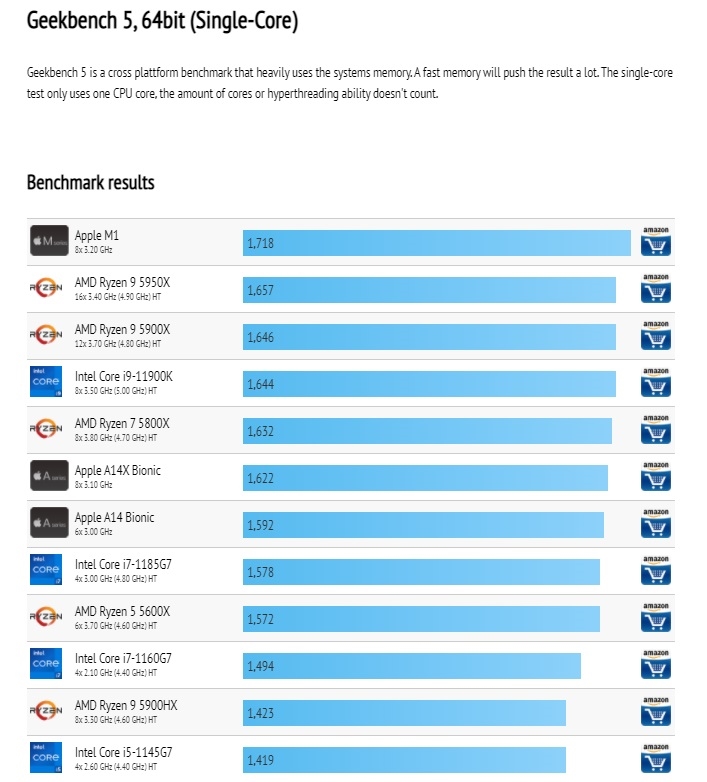Obviously, Apple is investing more and more energy in self-developed processors, which also explains why M1 can have such a good performance.
CPU-monkey statistics from foreign websites show that in the single-core performance ranking of Geekbench 5, M1 beats AMD's Ryzen 9 5950X and Ryzen 9 5900X to the top, and the scores of the three are 1718, 1657 and 1646 respectively. .
Intel's unreleased i9-11900K is also among them, with a running score of 1644, followed by AMD Ryzen 7 5800X, A14X and A14, with scores of 1632, 1622 and 1592.
It is worth mentioning that AMD’s mobile overclockable processor R9 5900HX is also on the list, with a single-core running score of 1423 points, which is a big improvement compared to the previous generation, but it is no match for the Intel 11th generation Core low-voltage i7.
For Apple, the biggest advantage of M1 over Intel and AMD is that it has built-in dedicated chips to handle specialized tasks, while the latter two focus on improving the general-purpose CPU core, so there is a difference in essence.

The M1 chip also has a new unified memory architecture that allows CPU, GPU, and other cores to exchange information with each other. Through unified memory, CPU and GPU can access memory at the same time instead of copying data between one area and another. Access to the same memory pool without copying, speeds up information exchange, and improves overall performance.
Some developers said with emotion that Apple has always asked users to ignore parameters and focus on experience. This makes sense, because their hardware is designed and integrated in their own systems, so they can reflect the hardware to the greatest extent. Performance, which also allows users to focus on the experience.

